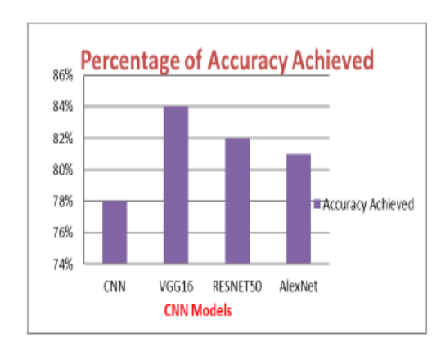


Indian Journal of Science and Technology
DOI: 10.17485/IJST/v16i45.2658
Year: 2023, Volume: 16, Issue: 45, Pages: 4186-4194
Original Article
Marepalli Radha1, Medikonda Asha Kiran2, Ch Ravikumar3*, K Raghavendar4
1Associate professor, Department, of Computer Science and Engineering, CVR College of Engineering, Mangalapally, Hyderabad, 501510, India
2Assistant Professor, Department of Artificial Intelligence & Machine Learning, Chaitanya Bharathi Institute of Technology, 500075, Hyderabad, India
3Assistant Professor, Department of Artificial Intelligence &Data Science, Chaitanya Bharathi Institute of Technology, 500075, Hyderabad, India
4Assistant Professor, Department of Computer Science and Engineering, Teegala Krishna Reddy Engineering College, Meerpet, Hyderabad, 500097
*Corresponding Author
Email: [email protected]
Received Date:19 October 2023, Accepted Date:28 October 2023, Published Date:05 December 2023
Objectives: The purpose of this research is to enhance the early diagnosis of skin cancer, with a particular emphasis on melanoma, by utilizing machine learning methods such as transfer learning and Convolutional neural networks (CNNs). The main objective is to differentiate between benign and malignant skin lesions in order to improve the chances of survival for this potentially lethal illness. Method: The SIIM-ISIC 2020 Challenge Dataset is a useful resource for comparing machine learning models that use CNNs to identify skin cancer early on. Including 33,126 DICOM images from a variety of sources, including Memorial Sloan Kettering Cancer Center, Hospital Clinic de Barcelona, and Medical University of Vienna, this large dataset was published by ISIC in 2020. A rigorous, well-structured technique is essential to guarantee the reliability and validity of the findings. For every model, the study uses a 70/30 train-test split, providing a thorough and exacting method for assessing each model's performance in this crucial area. Findings: This study emphasizes the value of early skin cancer identification. Significant differences are noted in the 5-year survival rates of the various stages of melanoma, with stage 1 having a 90–95% survival rate and stage 4 having just a 15-20% survival rate. Machine learning algorithms' potential to distinguish between benign and malignant skin lesions in images holds the promise of improving early detection and treatment outcomes. Novelty: This research introduces innovation by concentrating on melanoma and blending cutting-edge deep learning methods with the pressing requirement for enhanced skin cancer diagnosis. The distinctive contributions of this work encompass novel model architectures, data augmentation techniques, and innovative evaluation metrics. These innovations set this approach apart from existing methods, providing a fresh avenue for early diagnosis and underscoring the value of continuous research and data collection in the critical realm of cancer detection.
Keywords: Melanocytic Lesions, Epidermal Lesions, Image Feature Extraction, Skin Cancer, And Transfer Learning
© 2023 Radha et al. This is an open-access article distributed under the terms of the Creative Commons Attribution License, which permits unrestricted use, distribution, and reproduction in any medium, provided the original author and source are credited. Published By Indian Society for Education and Environment (iSee)
Subscribe now for latest articles and news.